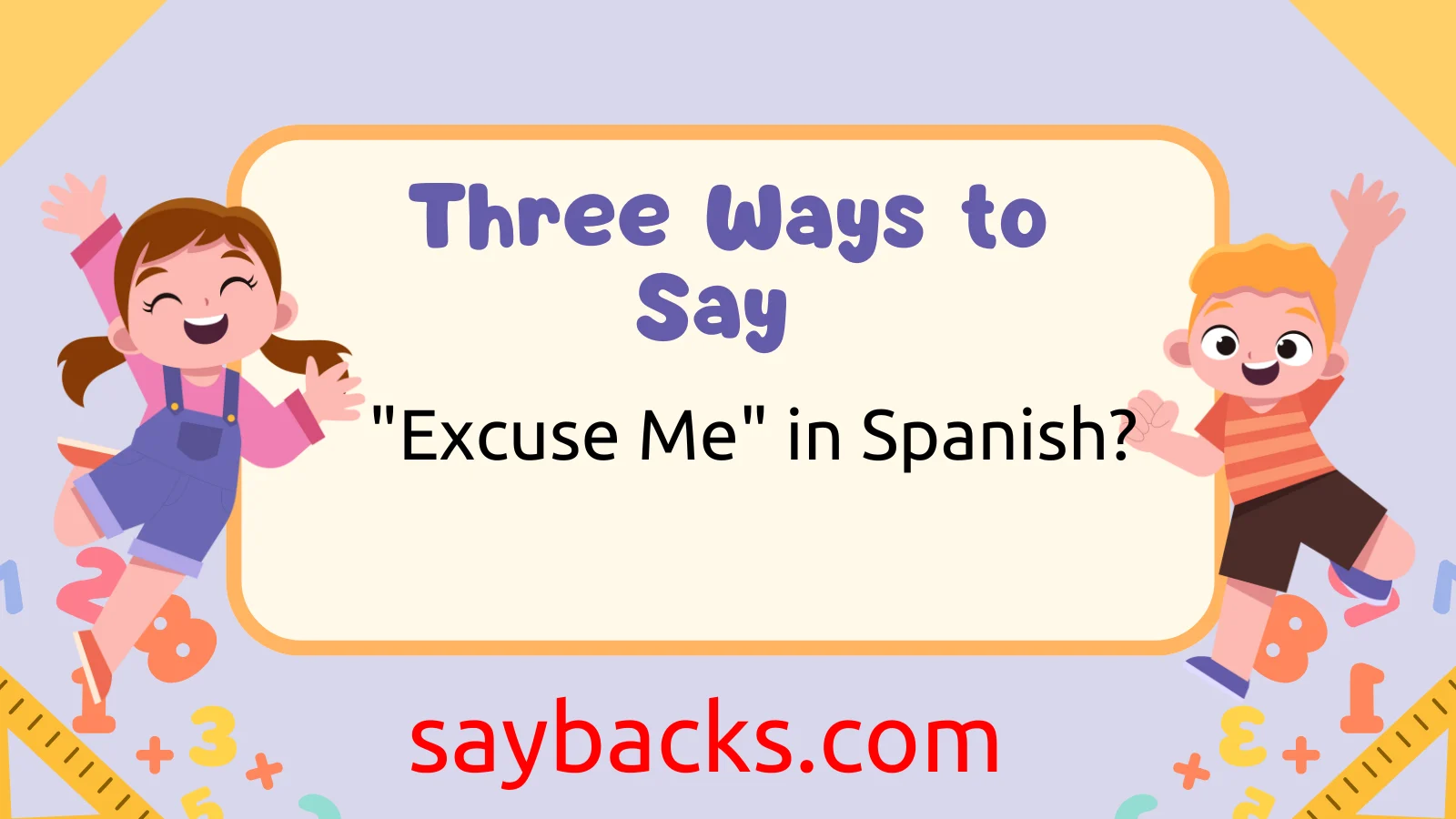When you’re learning a new language, polite words make a big difference. Saying “excuse me” is one of the most useful and respectful phrases to know. If you’re asking, what are three ways to say excuse me in Spanish, you’re in the right place! Spanish has different phrases depending on the situation—whether you’re trying to get someone’s attention, bumping into someone, or needing to walk past them. This article explains each one with examples so you can use them with confidence.
1. Perdón – For Saying “Sorry” or When You Make a Mistake
“Perdón” is a great word to use when you bump into someone or need to say “sorry” quickly.
When to use it:
- Accidentally step on someone’s foot.
- Interrupt someone by mistake.
- Drop something near another person.
Example:
- Perdón, no te vi. (Excuse me, I didn’t see you.)
✅ This is a short, friendly word that works in casual situations.
2. Disculpe – To Get Someone’s Attention Politely
“Disculpe” is more formal. Use it when you need help or want to speak to someone politely.
When to use it:
- Asking for directions.
- Calling a server in a restaurant.
- Starting a question with a stranger.
Example:
- Disculpe, ¿dónde está el baño? (Excuse me, where is the bathroom?)
✅ Perfect for polite conversations and public places.
3. Con Permiso – When Passing By Someone
“Con permiso” literally means “with permission.” It’s used when you need to get by someone or leave.
When to use it:
- Walking through a crowded space.
- Leaving a table.
- Passing between people in a tight spot.
Example:
- Con permiso, necesito pasar. (Excuse me, I need to get through.)
✅ This phrase shows respect for people’s space.
Final Thoughts
So, what are three ways to say excuse me in Spanish?
You now know:
- Perdón – to say sorry or for small mistakes
- Disculpe – to politely get attention
- Con permiso – when you need to move past someone
Each phrase has its own time and place, and using them correctly shows kindness and respect. With a little practice, you’ll sound natural and polite wherever you go!

